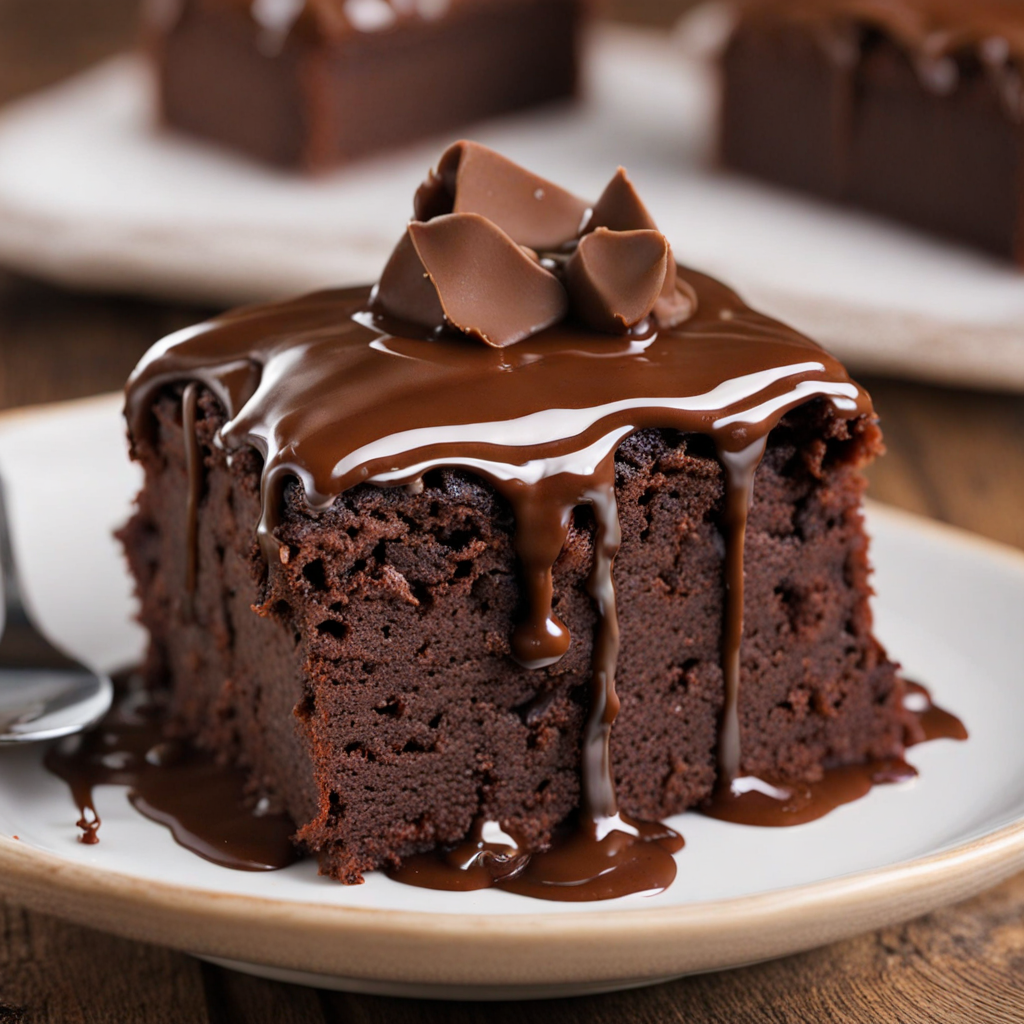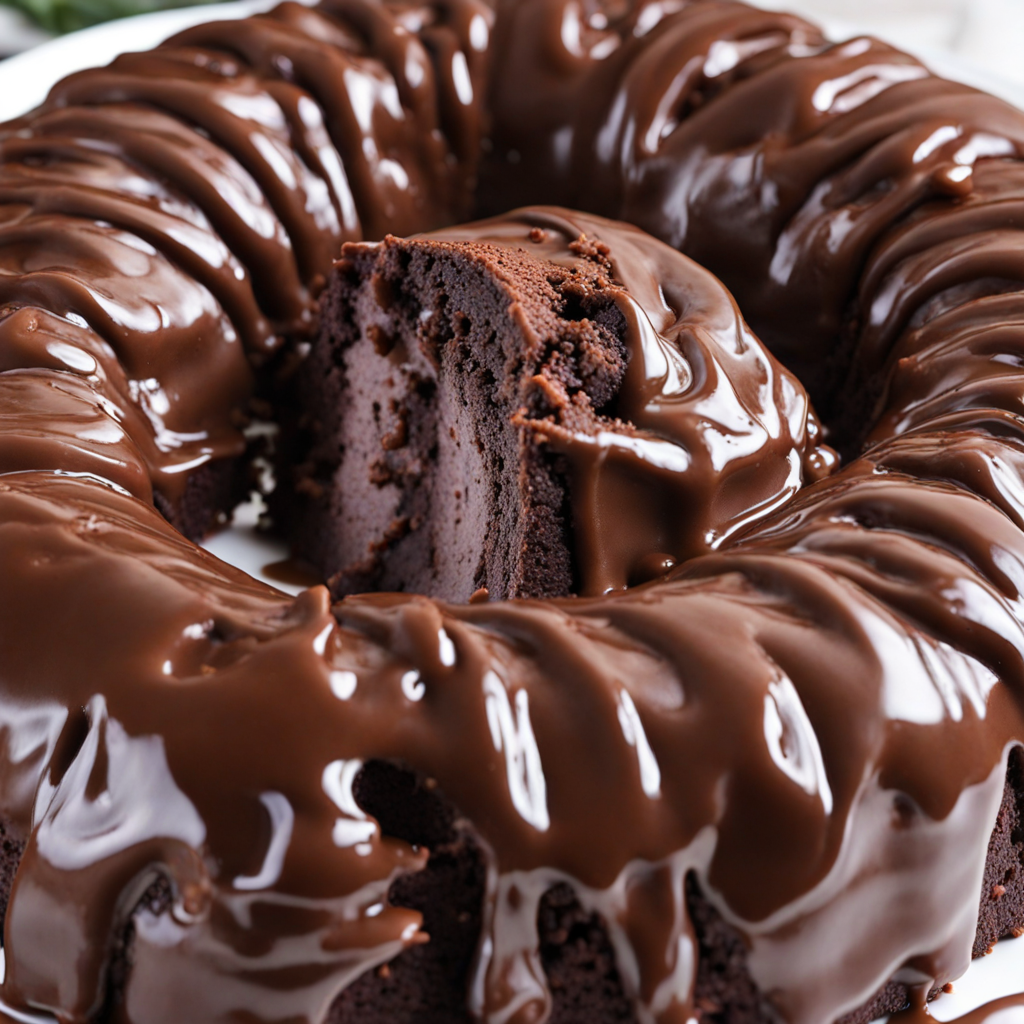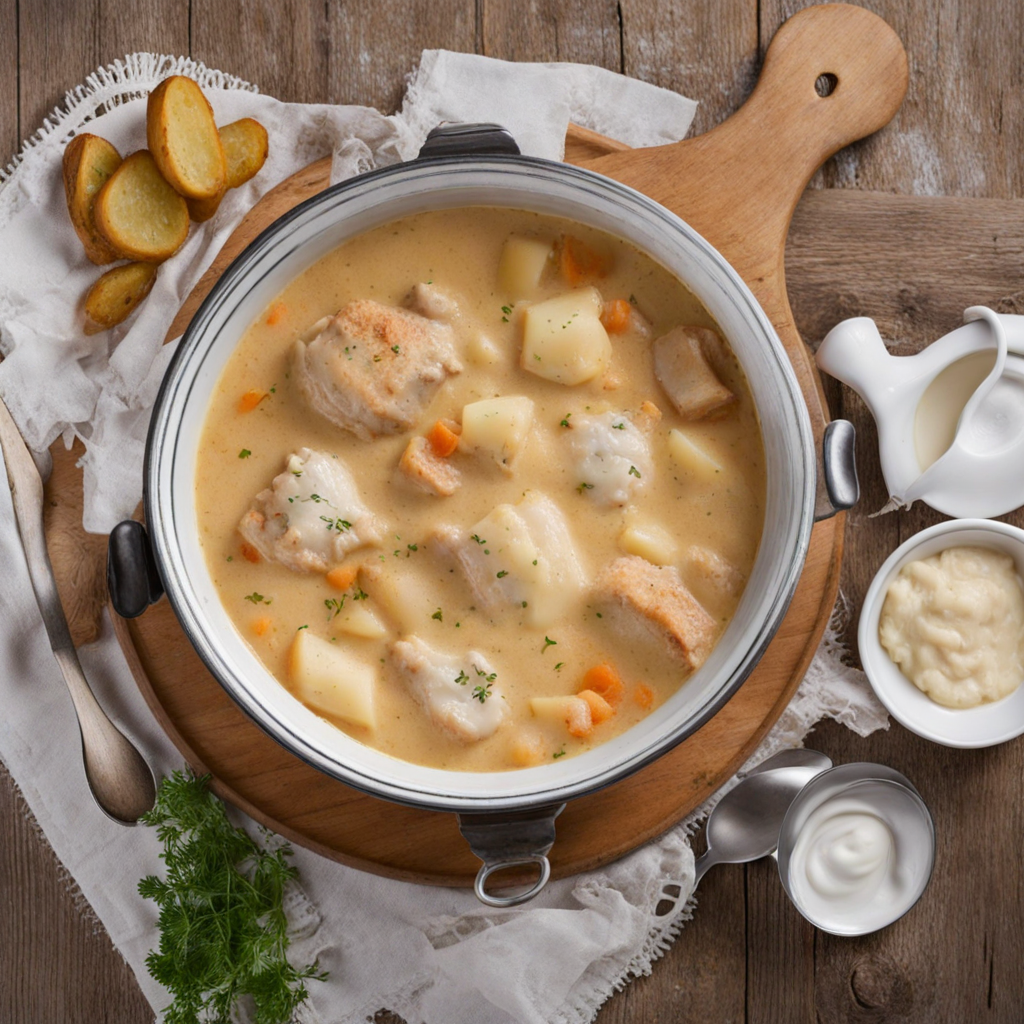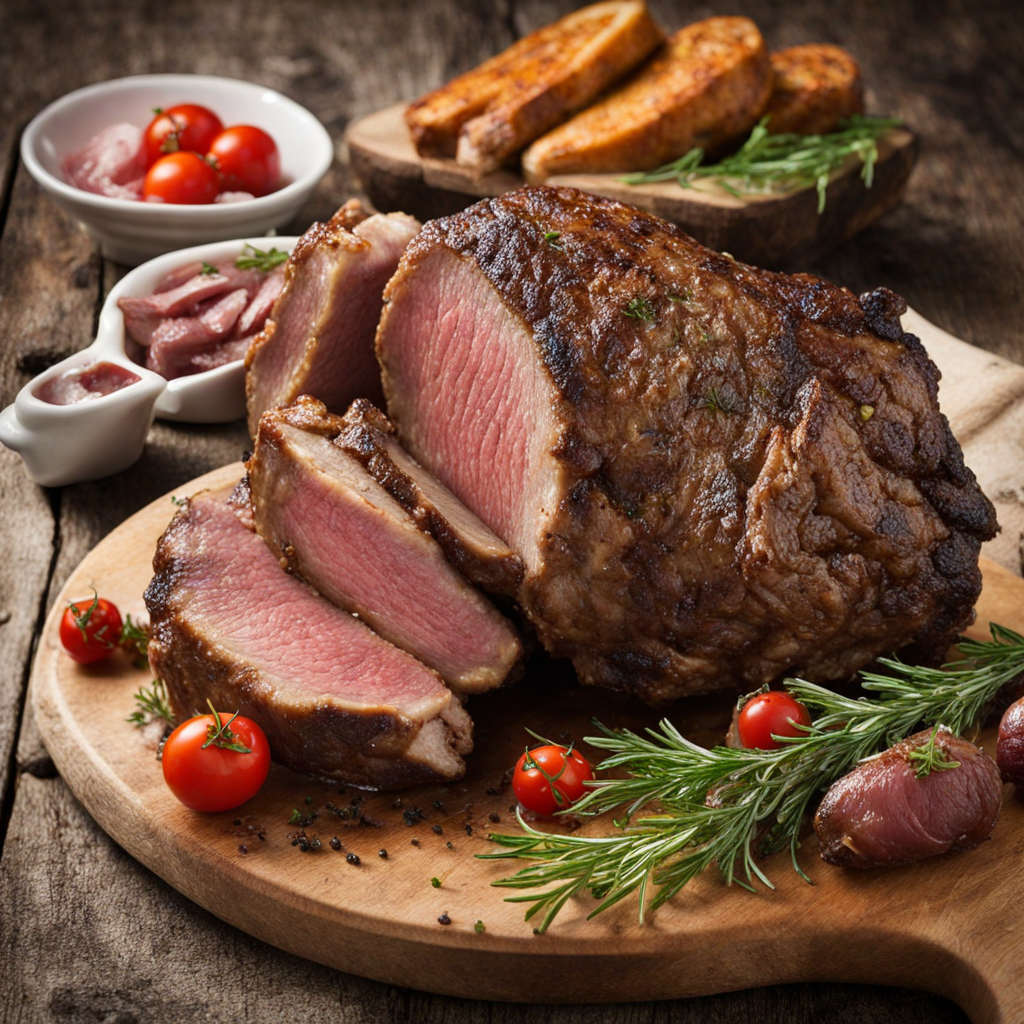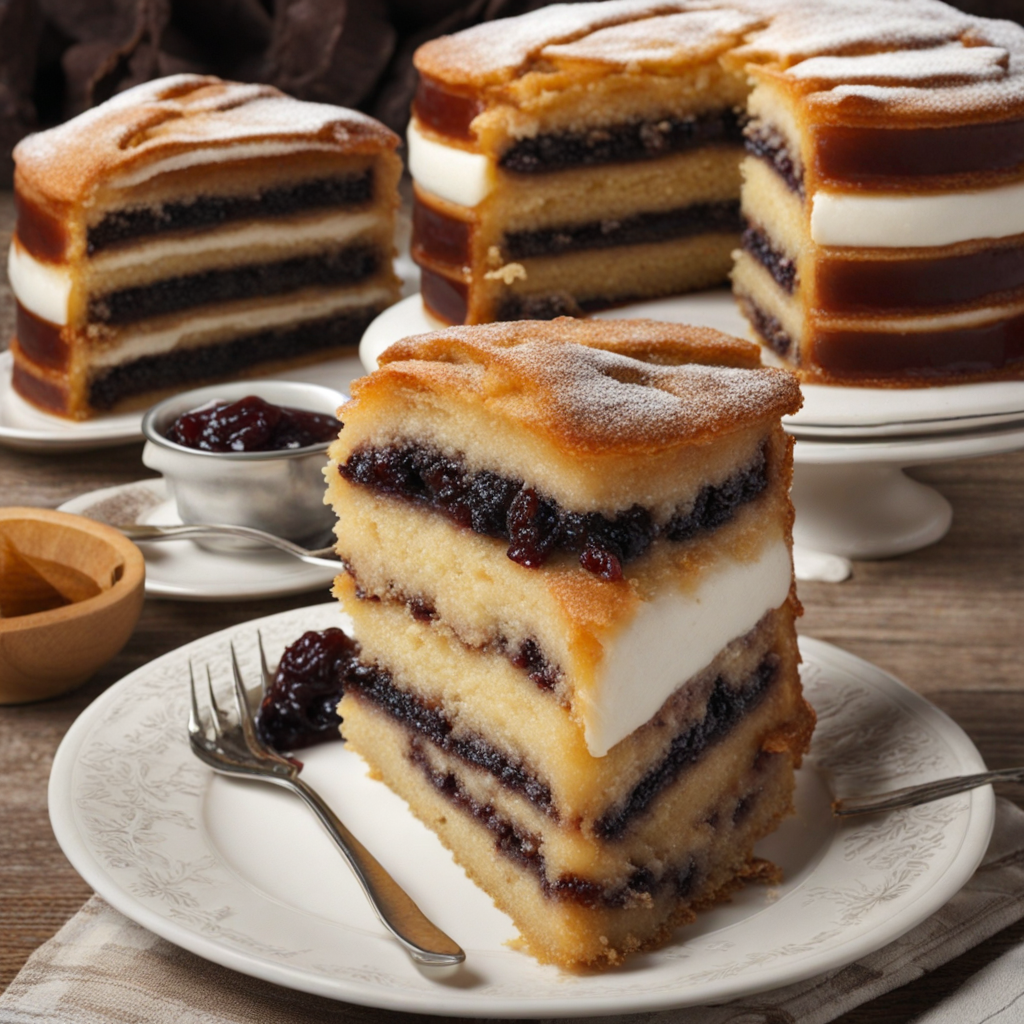Skúffukaka
Skúffukaka is a delightful Icelandic chocolate cake that captivates the senses with its rich, moist texture and deep cocoa flavor. This beloved treat is typically baked in a rectangular pan, which gives it a unique square shape that makes it perfect for sharing or indulging in a personal slice. The cake itself is often made with simple ingredients such as flour, sugar, eggs, and, of course, cocoa powder, resulting in a dense yet tender crumb that melts in your mouth. The simplicity of the recipe allows the chocolate to take center stage, making it a favorite among chocolate lovers. What sets Skúffukaka apart is its luscious frosting, which is usually a creamy chocolate glaze that beautifully complements the cake's deep flavor. This frosting is often made with a combination of butter, powdered sugar, cocoa powder, and milk, resulting in a silky smooth finish that adds an extra layer of indulgence. Some variations even incorporate toppings like shredded coconut or colorful sprinkles, making it not only delicious but visually appealing as well. Each bite is a perfect balance of sweetness and chocolate, creating a comforting and satisfying dessert experience. Traditionally enjoyed at gatherings, birthdays, and celebrations, Skúffukaka holds a special place in the hearts of many Icelanders. It’s often served alongside coffee or tea, making it an ideal accompaniment for afternoon snacks or dessert after a hearty meal. Whether you're sharing it with friends or savoring it alone, Skúffukaka offers a taste of Icelandic culinary tradition that is both familiar and unique, inviting you to explore the rich flavors of this charming Nordic island.
How It Became This Dish
Skúffukaka: A Sweet Legacy Skúffukaka, often referred to as Icelandic sheet cake, is a beloved dessert that has become synonymous with Icelandic culinary tradition. Its name translates to "box cake," which hints at its characteristic rectangular shape, typically baked in a shallow pan. The origins of Skúffukaka can be traced back to the mid-20th century, a period when baking became increasingly popular in Iceland. The simplicity of the recipe, combined with the use of readily available ingredients, made it an accessible treat for home bakers. The roots of Skúffukaka can be linked to the broader Scandinavian tradition of baking, where cakes and pastries have been key components of social gatherings and celebrations. In Iceland, the use of rhubarb, a common ingredient in many traditional Icelandic dishes, often finds its way into Skúffukaka, reflecting the local agriculture and the importance of seasonal produce. The cake itself is generally a chocolate or vanilla base, often enhanced with layers of cream or icing, making it a versatile dessert suitable for various occasions. Cultural Significance In Iceland, food is deeply tied to cultural identity and community. Skúffukaka serves not only as a delightful dessert but also as a symbol of hospitality and warmth. It is frequently served at family gatherings, birthdays, and other celebrations, embodying the spirit of togetherness that is central to Icelandic culture. The act of baking and sharing this cake fosters connections among family and friends, reinforcing social bonds. Moreover, Skúffukaka reflects Iceland's unique historical context. In the mid-20th century, Iceland was still recovering from the impacts of World War II, and food scarcity was a concern. Recipes for cakes like Skúffukaka were often designed to be economical, utilizing simple ingredients that could stretch to feed larger groups. This practicality has allowed the cake to endure through generations, adapting to different tastes while remaining a staple in Icelandic households. Over the years, variations of Skúffukaka have emerged, showcasing regional ingredients or personal touches that reflect the bake's versatility. For instance, some versions incorporate local berries, while others might feature a layer of custard or cream cheese frosting. These adaptations not only highlight the creativity of Icelandic bakers but also demonstrate the cake's ability to evolve while maintaining its core identity. Development Through Time As Iceland's culinary scene has evolved, so too has Skúffukaka. The globalization of food culture has introduced new techniques and flavors, allowing for an exciting fusion of traditional and modern baking practices. In recent years, bakers have experimented with alternative flours, sweeteners, and even gluten-free versions, catering to diverse dietary needs while keeping the essence of Skúffukaka intact. Social media has played a pivotal role in the resurgence of interest in traditional Icelandic recipes, including Skúffukaka. Food bloggers, Instagram influencers, and TikTok creators have shared their takes on this beloved cake, often featuring it in visually appealing presentations that attract a younger audience. This newfound visibility has not only spurred a revival of interest in traditional baking but also encouraged a sense of pride among Icelanders regarding their culinary heritage. In Icelandic society, where food is often a significant aspect of national pride, the preservation and innovation surrounding Skúffukaka represent a broader trend of embracing local traditions. Many Icelanders feel a deep connection to their culinary roots, and Skúffukaka serves as a delicious reminder of the country's rich history and the resilience of its people. Conclusion: A Cake for All Seasons Today, Skúffukaka is more than just a dessert; it is a representation of Iceland’s cultural history, societal values, and evolving culinary landscape. Whether enjoyed at a family gathering, a wedding, or a casual coffee break, this cake continues to bring people together, transcending generations and geographical boundaries. Its enduring popularity serves as a testament to the importance of food in fostering community and preserving cultural identity. As Iceland continues to modernize and embrace global culinary influences, Skúffukaka remains a cherished classic. It is a sweet legacy that not only represents the past but also promises a delicious future, ensuring that this delightful cake will continue to be baked, shared, and enjoyed for many years to come.
You may like
Discover local flavors from Iceland


